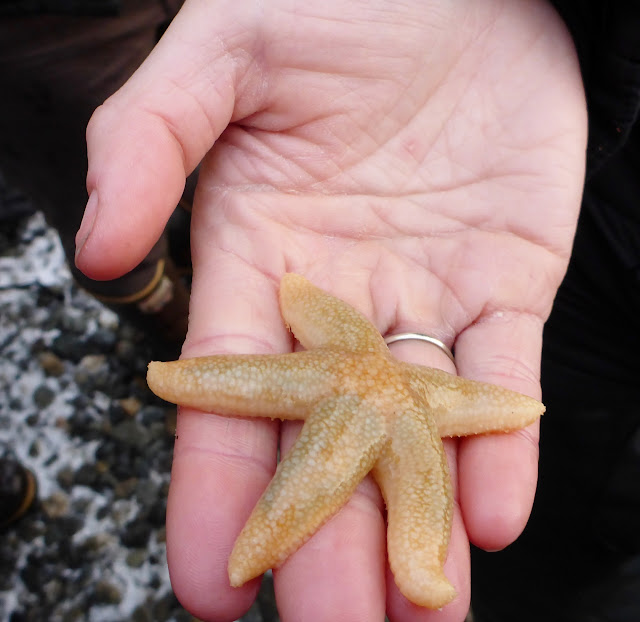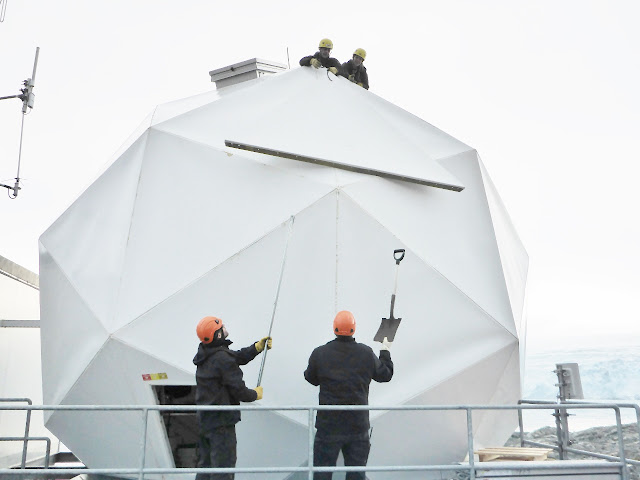I have started uploading my videos to YouTube. On the settings (the small gear on the bottom right side of the viewing screen) select HD for the best quality.
 |
| Divers getting ready to enter the water near the dock. There are several tires and ship railings on the bottom to be removed on this Earth Day April 22nd. |
 |
| Hauling trash out of the sea. |
 |
| Not all of it was trash though. The Antarctic is full of marine life that inhabits the 34 degree f water. |
 |
| Another beautiful Antarctic sunset is developing. |
 |
| Life on old ship railings. |
 |
| Snails. |
 |
| A fine job by all. |
 |
| Group picture credit to Karen Young. I'm in the middle back row with a lime colored t-shirt showing. |
 |
| The sunset reflecting off the continent's mountains about 15 miles away. Palmer Station is situated on Anvers Island. |
 |
| Antenna riggers are here to replace a few damaged radome panels on the Earth Station which houses the 16 foot main communications antenna. |
 |
| This panel is unbolted then pushed out and lowered to the ground by rope. |
 |
| A happy crew. |
 |
 |
| I move the antenna azimuth by drill. The position depends on where the riggers want to erect the scaffolding. |
 |
| After the new panels are in place and bolted one of the riggers climbs on top of the dome to caulk it in. |
 |
| I'm glad this isn't my job. |
 |
| A beautiful Humpback whale above the fireplace. The Antarctic is a favored cruising ground for these magnificent creatures. |
 |
| On the other side of this is a wall full of maps and travels books. People who work in Antarctica are world travelers during their off-season. |
 |
| Another job of mine is to maintain all the station's radios. These are in the Very High Frequency (VHF) shack. |
 |
| An outside view. |
 |
| This is the VHF tower that contains many different antennas. |
 |
| A reflective sunrise to the southwest. |
 |
| The antenna riggers have several days work on this tower. |
 |
| The morning sun reflecting off the continents coastal mountains to the south. |
 |
| Two on the tower. Another job that I'm glad I don't have. |
































